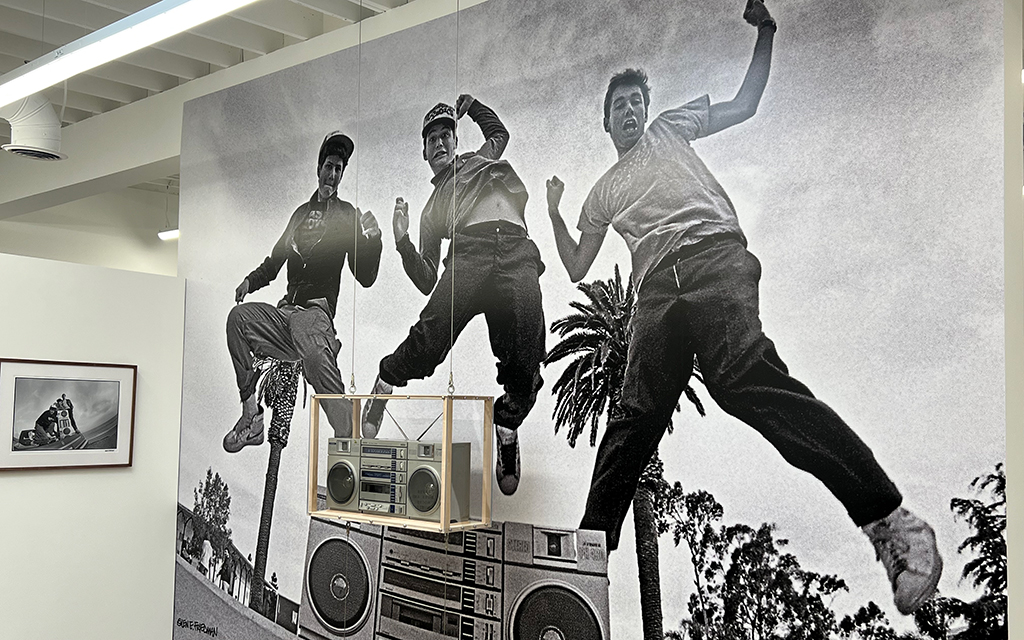LOS ANGELES – Maybe it’s the thrill of nostalgia. Or perhaps it’s proof that early rap music is just too good to ever die.
Either way, at a gallery in the heart of this city, the Beastie Boys are back.
The long-gone band that fought for its right to party is the subject of a temporary pop-up exhibit showcasing memorabilia from its golden era.
And while the concept of a temporary display like this one is not particularly new, it is gaining new popularity in the age of social media.
The idea of pop-up exhibitions among legacy music artists has proven to be a tactic that allows for the nostalgia factor to be upfront, while also providing an outlet to introduce such artists to millennials and Gen-Zers.
“It’s a strong youth-driven phenomenon,” said Edna Gundersen, a former music critic at USA Today, about the pop-up trend. “They’re a great way for artists and their fans to connect.”
With the phenomenon of temporary museums increasing in recent years, it could be an example of a trend that is here to stay.
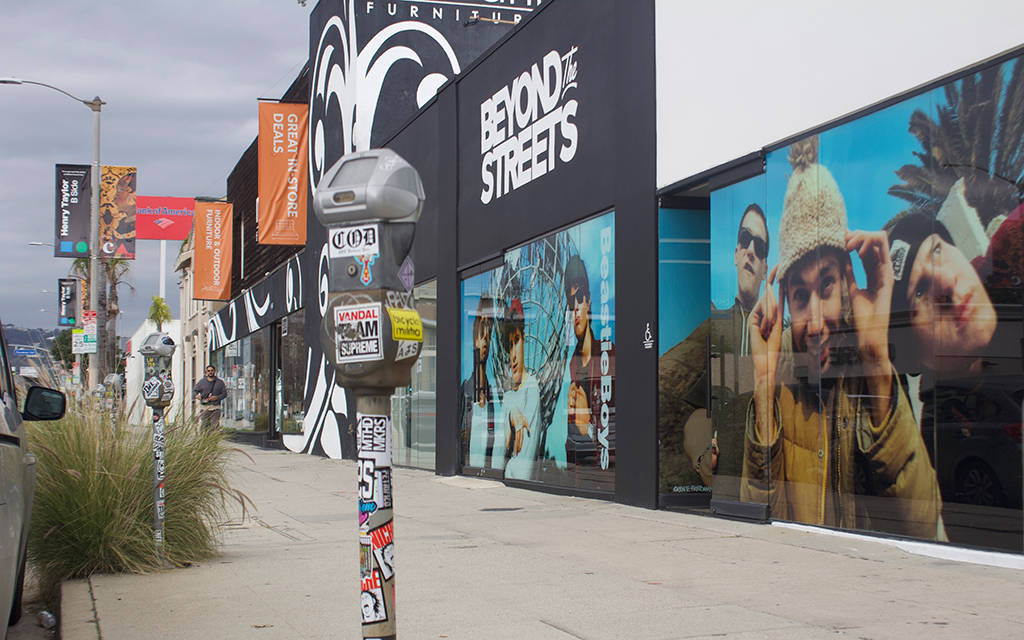
Street entrance to the Beastie Boys Exhibit in at Beyond the Streets art gallery in Los Angeles. Photographed on Jan. 19, 2023. (Photo by Daniel Ogas/Cronkite News)
The Beastie Boys pop-up exhibit, situated in a corridor of central Los Angeles near hip boutiques and restaurants, includes personal items from all three band members – Adam “Ad-Rock” Horowitz, Michael “Mike D” Diamond and Adam “MCA” Yauch.
The trio came together in 1981 as a punk group. But they morphed later in the decade into hip-hop and saw major success with their debut album, “License to Ill,” according to Billboard.
They were the first rap act to chart a Billboard top album, according to Billboard.
“License to Ill,” featured their hit single “(You Gotta) Fight for Your Right (to Party).” Over the 1980s and 1990s, the Beasties toured extensively, including appearances in Phoenix.
That success led them well into the 1990’s and beyond their breakup in 2012, the same year that Yauch died from cancer. The two remaining members released a book six years later.
The exhibit was put on through a partnership between art gallery Beyond the Streets and concert promotion outfit Goldenvoice, which promoted the band’s California shows.
“In 2018, we started working with the Beastie Boys while they were on their book tour.” said Roger Gastman, founder of Beyond the Streets, in an interview at the pop-up.
Gastman said he became curious about where to find some of the memorabilia, letters, costumes, early song drafts and other items that are referred to in the Beastie Boys book. He said he started working with the Beasties management to round them up with the idea of creating an exhibit. He tracked them down to garages, home and storage facilities.
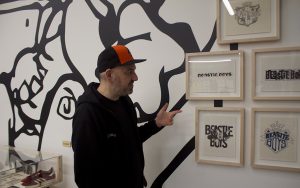
Beyond the Streets founder Roger Gastman is surrounded by Beastie Boys memorabilia displayed at their exhibit in Los Angeles. Photographed on Jan. 19, 2023. (Photo by Daniel Ogas/Cronkite News)
One signature item prominently in the center of the display: the massive boom box, the portable stereo set that signified taking music to the streets in the 1980s, that was featured in a photo with the band as they rose to fame. There are also the matching track suits they wore to perform for an appearance at New York’s Madison Square Garden.
Through these items, attendees were able to immerse themselves into the days that made up the height of the Beastie Boys career.
“This is a small fraction of the Beastie Boys archive. Everything is directly from them,” Gastman said. As a result, he said, guests to the pop-up museum, which is open through Jan. 29, have thought the collection is cool.
“There’ve been a lot of people through, and they’ve been very happy,” Gastman says.
Among those visitors on a recent day was Rebecca Pimm, who works in music marketing, who said, “It’s a great way to keep their influence alive and open to a new generation.”
Both Gastman and Pimm hope that the trend of pop-up exhibitions will take off far beyond the streets of LA.
Meg O’Hearn attended the exhibit on a whim. The 54-year-old brought her 20-year-old daughter, Breegan O’Hearn, to join her in reminiscing about one of her favorite artists.
Their visit to the exhibit was an example of how pop-up museums like this have a way of connecting generations.
“It’s my era, it’s a nice blast from the past,” Meg O’Hearn said as they stood a few feet from the Beasties’ track suits.
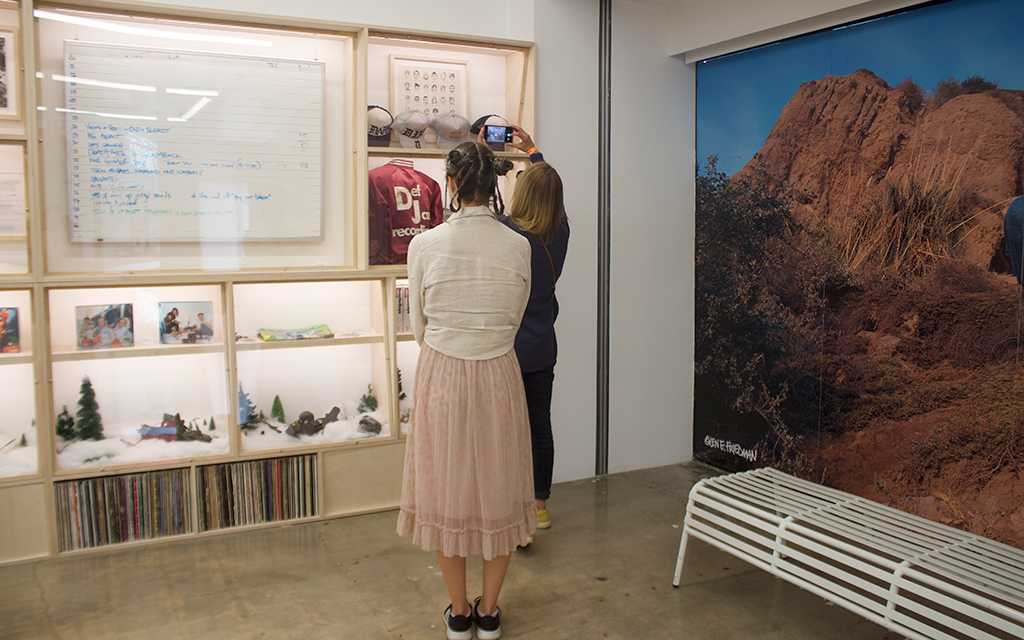
Breegan O’Hearn watches her mother, Meg, as she captures images from the Beastie Boys exhibit in Los Angeles. Photographed on Jan 19, 2023. (Photo by Daniel Ogas/Cronkite News)
Breegan O’Hearn, however, connected in different ways.
“I’m not familiar with the people, but I listen to their music. I think about how I’d feel if I saw one of my favorite current artists’ clothing this close and I’m able to understand my mom’s excitement.” she said.
While music-related pop-ups are, um, popping up, they aren’t the only temporary exhibits taking over empty storefronts.
In 2016, a similar experience, The Museum of Ice Cream, opened in New York as a case study of what it would look like for an exhibit to be planning its end before even beginning. It proved to be successful and moved around the entire country so a wider audience could have the chance to see the exhibit, according to MuseumNext.
Last year, an exhibition dedicated to slain hip-hop legend Tupac Shakur opened in Los Angeles not far from where the Beastie Boys pop-up is taking place. The exhibit brought in over 150,000 visitors, according to Billboard.
Pop music critic Gundersen said pop-ups build fan enthusiasm even after musicians have long fallen from the charts.
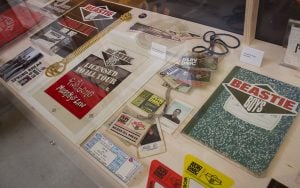
Beastie Boys merchandise and tour memorabilia is displayed in a case at Beyond the Streets art gallery in Los Angeles. Photographed on Jan. 19, 2023. (Photo by Daniel Ogas/Cronkite News)
“I think any act with a healthy, thriving fan base is smart to at least give it a try.” Gunderson said.
Fans’ tweets and other social media posts from exhibits not only create buzz, but hold the promise of leading to reviving sales of recordings. According to Forbes, 72% of millennials report that they make purchasing decisions based on Instagram posts.
University of Washington researchers released a study in 2017 on pop-up museums that said they are, “Uniquely suited in creating effective personal experiences.”
As for the Beastie Boys, Gastman said he wasn’t prepared to say whether it will go up in another storefront in another city. But he likes the idea. “I hope things like this can travel from Chicago to Wichita, and anywhere else that can support it,” he said.
In the meantime, he said he will be working on new temporary exhibits in LA.
“Nostalgia is not going to grow old. There is always a new group of people and new things to talk about.” Gastman said.

